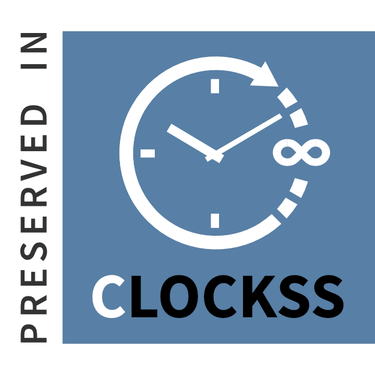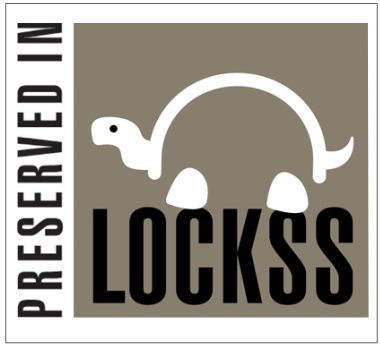Políticas de Sección
Artículos (RESEARCH AREA)
UMATICA es una revista de periodicidad anual centrada en el estudio y análisis crítico de la creación artística y la producción audiovisual, proponiendo un enfoque transversal desde una perspectiva interdisciplinar.
En este sentido, se proponen tres modalidades de envíos susceptibles de publicación una vez el proceso editorial y de revisión haya sido favorable para los trabajos presentados.
ARTÍCULOS
Artículos de investigación
Se considera artículo de investigación aquellos que son consecuencia de investigaciones originales, cuyos resultados y conclusiones suponen un avance para la disciplina.
Los artículos tendrán una extensión entre 5.000 y 7.500 palabras (sin incluir resumen, palabras claves y referencias). La estructura de los mismos seguirá el
- Introducción: se enuncia el tema de investigación (¿Qué?), especificando su justificación y alcance desde el punto de vista de su trascendencia para la solución de problemas o de su aportación para el avance del conocimiento (¿Por qué?) y se fijan claramente los objetivos y finalidades del trabajo (¿Para qué?). Asimismo se expone, de manera concisa, el estado de la cuestió Así encontraremos respuesta a las siguientes preguntas: ¿Qué se ha dicho antes? ¿qué se ha investigado en este campo? ¿cómo se ha hecho? ¿qué resultados se han alcanzado?. Se redacta de forma que se despeje la duda acerca de la novedad y originalidad del tema, se fijen los antecedentes y se ubique teóricamente el problema.
- Metodología: pretende responder a la pregunta ¿Cómo se ha desarrollado la investigación?. Implica la descripción pormenorizada de los materiales, criterios y procedimientos que se han empleado en la investigación. La finalidad de esta operación es informar sobre el proceso de investigación llevado a cabo, para que pueda ser repetido por otro investigador/a.
- Resultados: el contenido de este apartado responde a la pregunta ¿Qué hemos encontrado?Es importante identificar y describir los hallazgos de manera inteligible y concisa. Por ello, cuando sea posible, se emplearán tablas, gráficos o esquemas que muestren los resultados de “un vistazo”.
- Discusión: es la sección donde se procede al análisis e interpretación de los resultados. Mediante la agrupación, ordenación, clasificación y comparación de los datos se pueden esclarecer los hallazgos, verificar o refutar las hipótesis, deducir consecuencias, resolver problemas y/o sugerir nuevos caminos. En definitiva, en este apartado se responderán las siguientes preguntas: ¿Qué significa lo que se ha encontrado? ¿Cómo se relaciona con investigaciones anteriores? ¿Cómo se inserta en lo ya conocido? ¿Qué aplicaciones tiene? ¿Qué aporta? ¿Qué exigencias plantea en el futuro?
Ensayo Visual (VISUAL ESSAY)
ENSAYO VISUAL
En esta sección se acepta el envío de ensayos visuales. La información siguiente proporciona una serie de directrices básica para el desarrollo y la producción de su ensayo visual.
Nuestro concepto de un ensayo visual no está en ningún caso cerrado y puede haber modos alternativos de presentar sus ideas/trabajo. En cualquier caso, ante cualquier duda le recomendamos contacte con nuestro editor/a de sección para discutir su propuesta por adelantado y asegurar el acierto de su envío.
Un ensayo visual puede enfocar cualquier aspecto creativo, social o político de la cultura visual, esto puede ser una respuesta a otro trabajo visual previo, un comentario contra procesos visuales, ideas, etc. El elemento visual del ensayo debería formar parte intrínseca del argumento o las ideas expresadas, más que servir sólo como ejemplo, ilustración o documentación adicional.
Las imágenes en los ensayos visuales pueden provenir de una gama de fuentes variada, por ejemplo:
- Una colección de imagen que está ya disponible: una colección curated o un archivo de imagen
- Imágenes que han sido producidas para el ensayo
- Imágenes producidas como datos de investigación
- Imágenes seleccionadas o producidas
El ensayo visual puede articularse por tanto con fotografías, dibujos, diseños, ilustraciones, infografías, esquemas, gráficas u otras fórmulas de visualización de datos. Siempre que estos respeten los derechos de autor y propiedad intelectual vigentes.
Un ensayo visual puede ser una pieza completamente visual o se pueden combinar imágenes y texto.
Todas las propuestas de ensayo visual enviadas a la revista Umática tendrán la estructura que se detalla a continuación: Título (en español e inglés); Resumen en español, con una extensión entre 150 y 200 palabras, seguido de las palabras clave (no más de 5 palabras), la traducción al inglés de dicho resumen (abstract), del título del artículo y de las palabras clave (key words) y el sumario. La estructura del ensayo en si se compone de: Introducción, cuerpo del ensayo visual, conclusiones y referencias. El ensayo visual tendrá entre 10 y 25 páginas ajustadas a la plantilla específica (descargue la plantilla aquí).
Si el ensayo está escrito en inglés, se añadirá el resumen y las palabras clave en español. No se hará referencia a la autoría del ensayo visual en ningún caso en el texto de la propuesta.
Proyectos de Creación (CREATION ZONE)
PROYECTOS DE CREACIÓN ARTÍSTICA Y CREACIÓN INTERDISCIPLINAR
UMATICA, para su sección Proyectos de Creación Artística, acepta la presentación de proyectos de creación artística e interdisciplinar, donde tienen cabida proyectos de creación híbrida que supongan una contribución a la investigación en el campo de la producción artística. En esta sección podrán presentarse de forma continuada proyectos de creaciones en fase proyectual (p.e. en fase de pre-producción) y/o proyectos ya producidos (aunque éstos aún no hayan sido expuestos); en cualquier caso, será imperativo detallar con precisión el estado del mismo.
El proyecto presentado deberá aportar una descripción conceptual detallada que acompañe a la producción, obra y resultados del proyecto. La extensión máxima del Proyecto de Creación oscilará entre las 2500 y 4.500 palabras (sin incluir resumen, palabras claves y referencias), y se organizará de acuerdo con la siguiente estructura:
- Descripción y estado del proyecto:en este apartado se especifican el proceso actual del proyecto, su estado, la fase en la que se encuentra así como en relación al statement del creador, el contexto previo al proyecto, su motivación y la orientación de las líneas de trabajo futuras.
- Marco teórico-conceptual:en la que se exponen el contexto teórico del proyecto, su desarrollo y las conexiones con el aparato teórico del proyecto.
- Producción: en este epígrafe se presentan con detalle los principales aspectos que forman parte del proyecto (disciplina, producción, materiales, formatos, lenguajes, temáticas, corrientes, etc.). El trabajo de producción se debe estructurar en las diferentes fases.
- Obra y Resultados: se presentan en dos vertientes pre-proyectual o ya producido según el estado del proyecto.
- Referencias artísticas y bibliográficas:de los artistas y documentos utilizados para la realización del proyecto.
Se debe incluir en todo caso el Título (en español e inglés); Resumen en español, con una extensión entre 150 y 200 palabras, seguido de las palabras clave (no más de 5 palabras), la traducción al inglés de dicho resumen (abstract), del título del artículo y de las palabras clave (key words) y el sumario.
El dossier remitido podrá estar redactado en español e inglés (en el caso de que el texto esté escrito en inglés o cualquier otro idioma distinto al español, se proporcionarán título, resumen y palabras clave en español). Además del dossier del proyecto, se enviará una página de cortesía en un documento aparte, en la que se incluirá el título del proyecto en español y en inglés, el nombre del autor/a o autores, un breve currículo de hasta 350 palabras, correo electrónico y teléfonos de contacto. Indicaciones para el envío de imágenes.
Las imágenes deberán estar digitalizadas a 300 ppp. No se aceptarán las que no cumplan estos requisitos. Umática se reserva el derecho de eliminar las ilustraciones que no ofrezcan suficiente calidad para su impresión. El fichero de imagen podrá ser TIF o JPG. Se enviará cada imagen en un fichero individual y debidamente numerado.
Las imágenes deberán ir numeradas, y al final del texto se incluirá un listado con los números y sus pies de fotos. En el texto deberá indicarse además la llamada a imagen, donde corresponda, mediante el número entre corchetes en negrita. Ejemplo: [1].
Además de cada imagen en buena calidad de resolución, al final del texto también deberán incluirse las imágenes, insertas en varias páginas con baja calidad de resolución. En total, el documento con el texto y las imágenes insertadas no deberá superar los 5 MB de capacidad.
Al aceptar su publicación, los autores ceden los derechos de reproducción de las ilustraciones y los derechos para la edición digital. La solicitud de los derechos de reproducción es responsabilidad exclusiva de los autores.
Diálogos (CONVERSATIONS)
Espacio para el diálogo y la discusión constructiva en el que se editarán entrevistas y colaboraciones realizadas entre creadores, productores, agentes, especialistas, artistas, etc. relacionados con la temática abordada por la publicación o que ofrezcan un contrapunto transversal al enfoque de cada número.


23.png)








